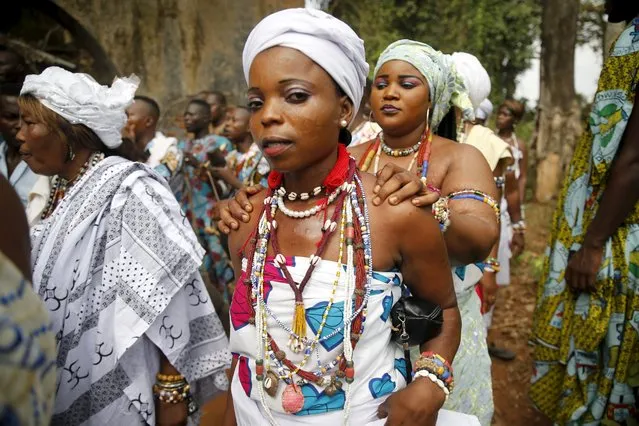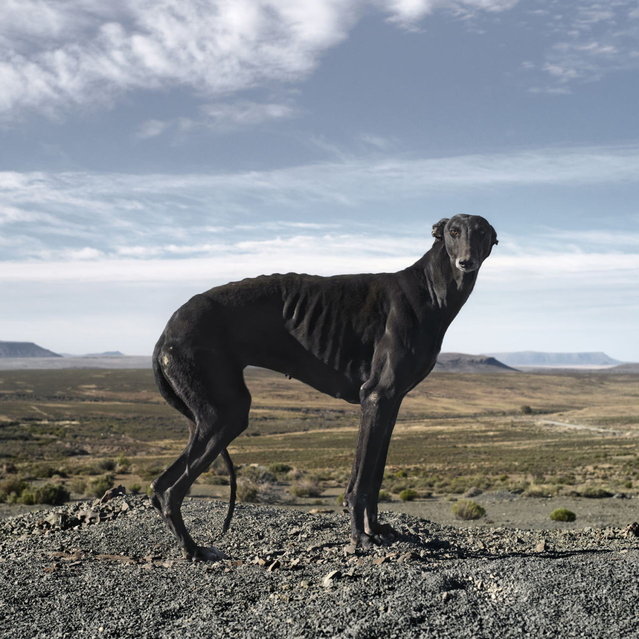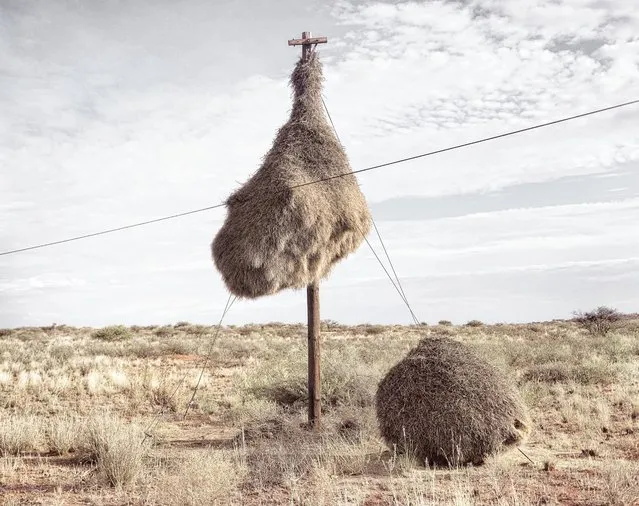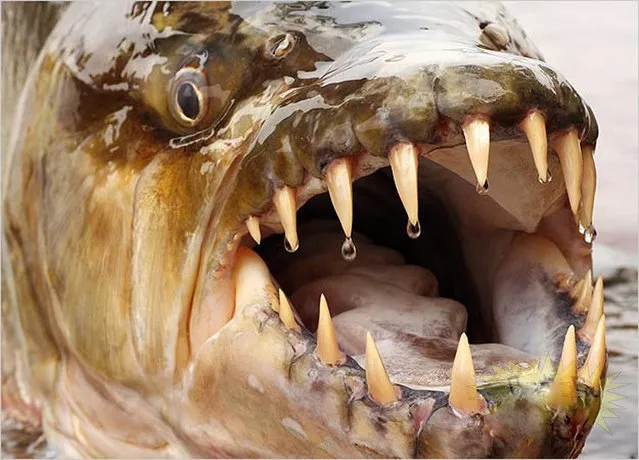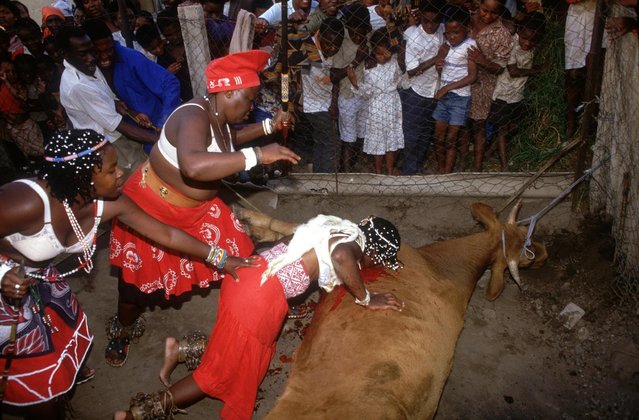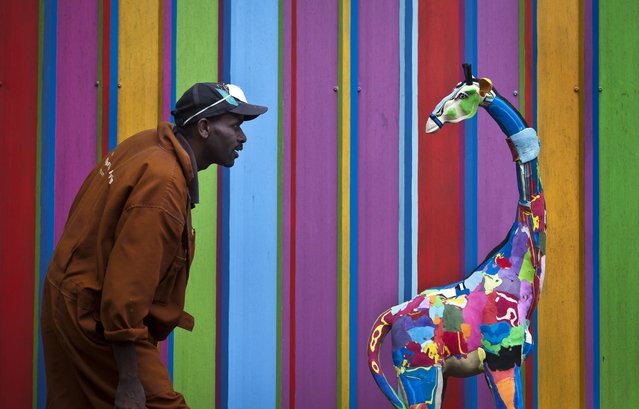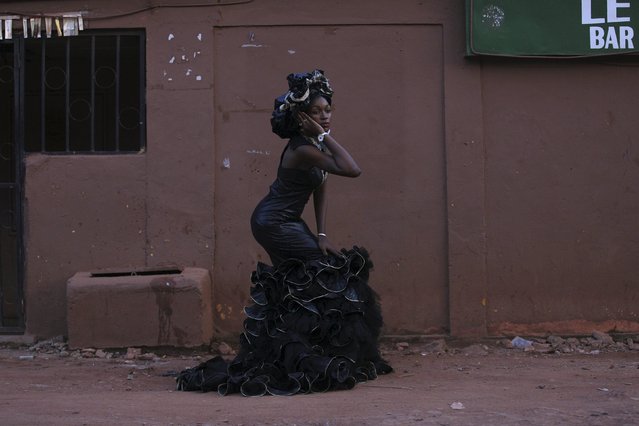
A model wears a bazin dress made by designer Fadi Maiga in Bamako, Mali, October 21, 2015. Gasps of delight filled the convention hall as models, decked out in Mali's signature bazin fabric in crimson reds, indigoes and neon greens, strutted the catwalk while musicians from across the West African nation provided the soundtrack. (Photo by Joe Penney/Reuters)
20 Nov 2015 08:04:00,post received
0 comments

